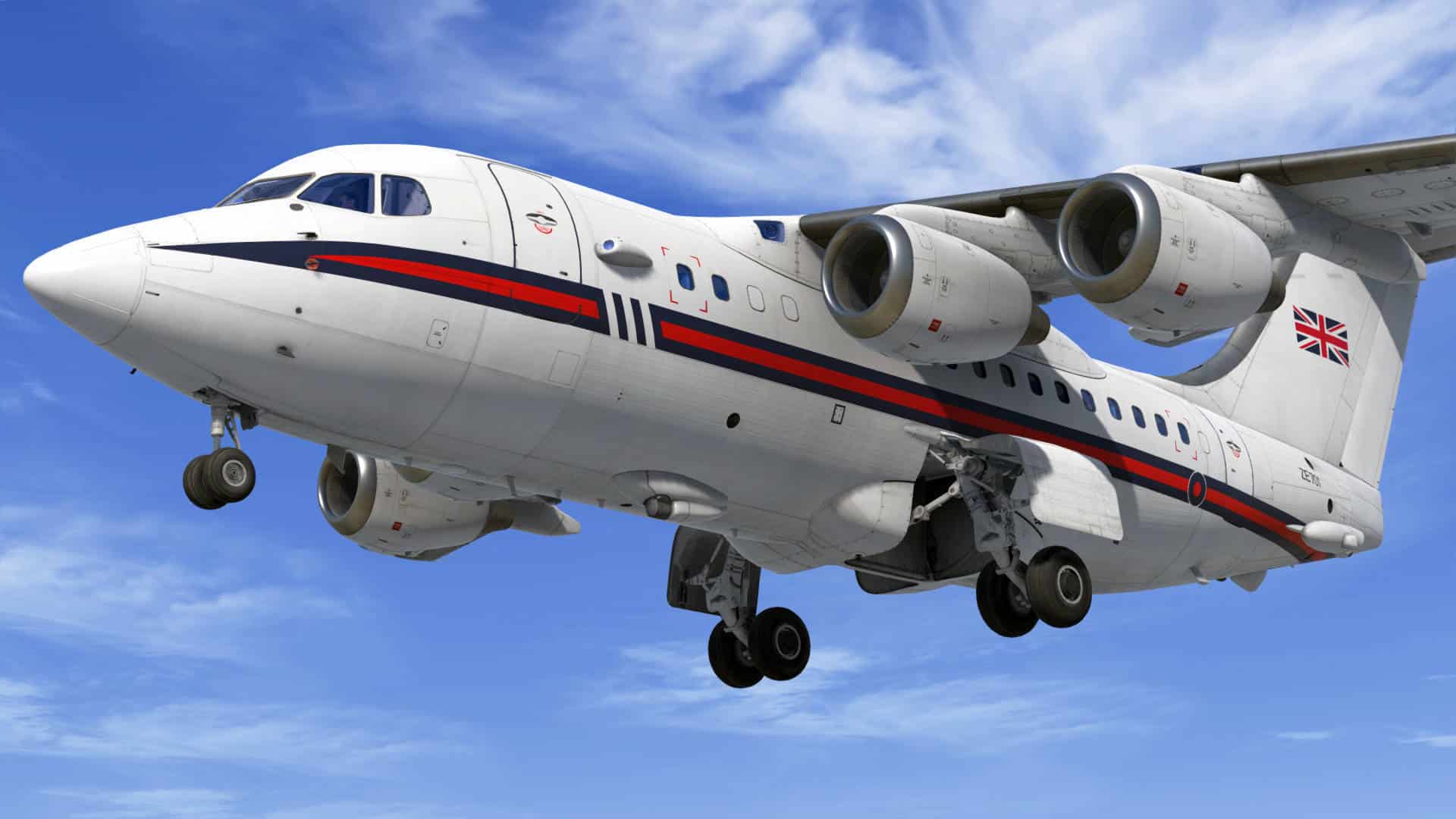 Just Flight hat die BAe 146 (auch bekannt als Jumbolino) für Prepar3D V4/5 fertiggestellt.
Just Flight hat die BAe 146 (auch bekannt als Jumbolino) für Prepar3D V4/5 fertiggestellt.
Das eigene Team von Just Flight konnte bei der Entwicklung des vierstrahligen Passagierjets auf reale Modelle aus dem de Havilland Aircraft Museum zugreifen. So ist eine detaillierte Version mit realistischem aerodynamischem Flugverhalten entstanden, die man aufgrund der vielfältigen Ausstattung als Study-Level Add-on-Flugzeug bezeichnen kann.
British Aerospace hat die 146 ursprünglich als Regionalairliner gebaut. Doch später wurde der Jet auch als Frachter oder Militärflugzeug genutzt. Der Erstflug der BAe 146-100 fand am 3. September 1981 statt. Ihr folgten noch die -200 und -300 (plus Cargo und Militär) Versionen. Der Jet wurde überall auf der Welt von mehr als 30 Fluggesellschaften geflogen. Die Varianten der BAe 146 und viele Bemalungen sind in Just Flights Produkt enthalten.
Außerdem bietet das Add-on viele bewegliche Teile wie Landeklappen, Spoiler, Heckbremsklappe, Türen und Ladeluken, Scheibenwischer und einklappbares Fahrwerk.
Im Cockpit wurden sämtliche Systeme (Hydraulik, Elektrik, Treibstoffmanagement, Klimaanlage, Kabinenluftsystem) inklusive FMS authentisch umgesetzt (umfangreiche Featureliste siehe unten).
In Sachen Grafik bietet das Modell dynamische Beleuchtung und PBR Materialien. Beim Sound hört man die echten Lycoming Turbinen mit 3D-Effekten.
Die BAe 146 ist bei Just Flight für ca. 83 Euro erhältlich. Der Download hat eine Grösse von 2,6 GB.
Features:
- Eight variants of the 146 are included:
– 146-100
– 146-200
– 146-300
– 146-200 QC & QT (cargo)
– 146-300 QT (cargo)
– CC.Mk2 (RAF VIP configuration with countermeasure pods)
– C.Mk3 (RAF cargo configuration with countermeasure pods) - Accurately modelled using real-world aircraft plans and comprehensive photography of the real aircraft (G-JEAO, ZE701 and ZE708)
- Numerous animations including:
– Trailing edge flap surfaces
– Wing-mounted spoilers and tail-mounted airbrake
– All passenger, service and cargo doors
– Windscreen wipers
– Distinctive retractable tricycle landing gear
– Countermeasure pods, HF aerial and more - Physical Based Rendering (PBR) materials produce realistic metallic, plastic and glass surfaces (requires Prepar3D v4.4 and above)
- 4096×4096 textures are used to produce the highest possible texture clarity (optional 2048×2048 textures available via a switcher tool)
- Authentic labelling and placards based on those found in the real aircraft
COCKPIT
- Captain and First Officer positions are modelled with hundreds of functional switches, knobs and controls
- A truly 3D cockpit environment right down to accurately modelled seat belts and screw heads – every instrument is constructed fully in 3D with smooth animations
- Cockpit textures feature wear and tear based on reference photos taken in the real aircraft to produce an authentic environment
- Interactive checklists for every stage of flight
- Panel state system which will automatically save the panel state whenever a flight is saved and reload the panel state whenever that flight is loaded
- Aircraft configuration system that will allow you to choose between ‘cold & dark’ or ‘ready for take-off’
- Many features have been added to help with usability such as the ability to hide the control yokes for a better view of the instruments and pre-set angled views for the overhead panel, centre pedestal and jump seat
- Flight computer panel with useful information such as fuel burn, endurance, speed and wind speed/direction
LIVERIES
146-100
- Air France Express (G-JEAT)
- AirUK (G-UKPC)
- British Aerospace demonstrator (G-SSSH)
- Dan-Air London (G-BKMN)
- Formula One Flight Operations (G-OFOM)
- Jersey European (G-JEAO)
- Pacific Southwest Airlines (N246SS)
- United Express (N463AP)
146-200
- AirCal (N146AC)
- Air Canada Jazz (C-GRNZ)
- American Airlines (N699AA)
- Continental Express (N406XV)
- QantasLink (VH-NJJ)
- SN Brussels Airlines (OO-DJJ)
- USAir (N165US)
146-200QC
- TNT Airways (OO-TAZ)
- Titan Airways (G-ZAPK)
146-200QT
- TNT Airways 1990s (G-TNTA)
- Ansett Australia Airlines Cargo (VH-JJZ)
- Titan Airways (G-ZAPR)
146-300
- Aer Lingus (EI-CTO)
- Air New Zealand (ZK-NZN)
- Ansett Australia (VH-EWM)
- Astra Airlines (SX-DIZ)
- British Airways (G-OINV)
- Flybe (G-JEBC)
- KLM UK (G-UKAC)
146-300 QT
- ASL Airlines (EC-MID)
- Australian Air Express (VH-NJM)
- TNT Airways (OO-TAD)
CC.Mk2
- RAF Statesman modern (ZE701 – Queen’s Flight)
- RAF Statesman 1980s (ZE701 – Queen’s Flight)
C.Mk 3
- RAF (ZE708)
Air-conditioning and pressurisation system:
- Automatic and manual pressurisation modes with control of outflow valves, barometric and cabin rate settings, indications and cabin altitude warnings
- Cabin altitude and differential values based on real-world data
- Automatic and manual flight deck and cabin temperature control – takes account of ambient temperature, air supply from the engines and/or APU, fresh or recirculated air and even whether the doors are open!
Auto-flight system:
- Autopilot and flight director system with multiple modes:
– Pitch – Altitude arm and hold, vertical speed, IAS, Mach, glideslope and go-around
– Roll – VLOC, BLOC, LNAV (FMC) and HDG
– Turbulence mode
– Pitch and bank selection and hold
– Sync mode for quick changes to aircraft attitude
– Fully functional mode annunciations, engagement and disengagement criteria (including roll and pitch rate cut-out and stall cut-out) and integration with ADI and HSI - Simulated CAT 2 approach monitoring system
Flight Management Computer:
- Custom-coded UNS-1 FMC for accurate navigation
- Navigraph database support for up-to-date AIRAC cycles
- Lateral navigation integration with LNAV autopilot mode and HSI
- Vertical navigation information for use with autopilot pitch modes
- Ability to create full flight plans with import and export functions
- SID and STAR support
- Fuel management, performance, radio tuning and more
Communication system:
- Dual VHF COMM, NAV and ADF radios
- Cockpit voice recorder test and indication systems
- Functioning audio selector and PA chime
Electrical system:
- Independent engine, APU and external power (AC and DC) sources
- Generator and TRU loading, and automatic load switching
- Standby generator and inverter power sources for non-normal procedures
- Independent AC channels, including normal, essential and emergency busbars, and bus-ties facilities
Fire protection system:
- Engine, APU and fuselage fire detection and warning systems
- Engine fire extinguishing system
- Fully simulated test functionality
Flight controls:
- Servo-tab simulation – elevator and aileron surfaces position is dependent on servo-tab control puts and air flow over the surface
- Iconic tail-mounted airbrakes, roll and lift spoilers with independent hydraulic sources, realistic deployment times and custom AC and PTU pump sounds
- Flight control disconnect and yoke control lock functionality
- Accurately simulated flap system with hydraulic and electrical power sources, baulk override, fault testing and iconic howl when deployed in the air
- Stall identification and warning systems, including stick shaker and pusher, and inhibit mode
- Simulated configuration warning system
Fuel system:
- Realistic fuel load and burn based on real-world data
- Simulated electrical normal and hydraulic standby fuel pumps, centre and wing tanks with feed tanks for each engine, and LP and HP fuel cocks
- Fully functional centre-to-wing fuel transfer, cross-feed and common-feed valves
Hydraulic system:
- Independent yellow and green hydraulic systems with realistic pressure, quantity and supply to other systems
- Simulated AC and DC-driven backup pumps and power transfer unit (PTU)
- Functional standby generator for supplying AC and DC electrical power in non-normal situations
Ice and rain protection system:
- Ice detection and accumulation simulation, anti-icing and de-icing functionality for exterior surfaces, warning systems for in-flight monitoring
- Simulation of separate inner and outer wing anti-icing, and windscreen overheating
Indicating and recording systems:
- A vast array of annunciators, including accurately simulated Master Warning System (MWS) with amber and red cautions, audible warnings and ground testing for all systems
- Flight Data Entry Panel (FDEP) for entering flight details (date, flight leg and number)
Landing gear:
- Normal and emergency gear extension, including gear down-lock override
- Gear configuration indication and warning systems
- Simulated brake accumulators supplied via the hydraulic power sources (yellow or green), anti-skid and brake temperature indicator with cooling down periods that are affected by ambient temperature, brake usage and brake fans
- Captain and First Officer tillers for realistic nose-wheel steering
Navigation systems:
- Transponder with TCAS (integrated with VSI TCAS display) and flight ID input functionality
- Dual RMI/DBI and HSI navigation instruments, fed by two NAV and ADF radios
- Instrument source selector for NAV 1, NAV 2 or dual navigation via the ADI, HSI and auto-flight system
- Choice of traditional or TCAS VSI
- Fully functioning test modes on navigation instruments (e.g. HSI, radio altimeter and ADI)
- Weather radar with Active Sky compatibility and map function (weather mode requires Active Sky for P3D)
- Custom-coded GPWS with modes 1-6, steep approach mode, flap warning override and test functionality
Oxygen system:
Flight crew and passenger oxygen systems with valve and mask deployment controls.
Pneumatic system:
Realistic bleed air demand from engines and APU, and pneumatic supply to air-conditioning and ice protection systems.
APU:
- Realistic APU start and shutdown procedures, and bleed air and electrical power supply
- RPM, TGT and fuel burn values based on real-world data
Doors and stairs:
- Animations panel for controlling passenger and service doors, lower cargo doors and fuselage cargo door (QT/QC only)
- Deployable airstairs, powered by AC hydraulic system
Powerplant:
- N1, N2, TGT, oil pressures and temperatures will all differ subtly between engines
- Accurately simulated Thrust Modulation System (TMS) with take-off (full or flexible), max continuous thrust, TGT and descent modes. Takes account of engine bleed air requirements e.g. for to air-conditioning and ice protection systems.
- Realistic engine start procedures with external, APU or cross-start sources
- Simulation of ground and flight idle baulks
- Take-off and landing speed card which automatically displays reference speeds depending on current aircraft weight, and settable airspeed indicator and engine instrument bugs
Lighting:
- Independent lighting controls for Captain and First Officer
- Dimmable integral lighting for each panel
- Dimmable dynamic flood and storm lighting for a highly immersive and customisable night environment (more than 10 individual light sources including entry, lap, sill and flight kit) – Prepar3D v5 only
- White and red flashlight for night operations – Prepar3D v5 only
- Accurately simulated exterior lighting including wing, logo and runway exit lights, and taxi/landing and navigation lights with different intensities
Sounds:
- Studio quality Lycoming ALF-502 engine noise recorded from RAF C.Mk3 ZE708
- Over 450 flight deck sound effects recorded from RAF CC.Mk2 ZE701
- Detailed equipment audio such as the APU, brake fans, electrical circuits, hydraulic equipment and many more
- Distinctive flap retraction/extension airflow ‘howling’ sound
- Accurate 3D placement of sounds
FDE and effects:
- Realistic and accurate performance in the air and on the ground, using unique flight models for all variants based on real-world performance and handling data, and input from real-world 146 pilots.
- Custom effects for enhanced immersion, including engine exhaust, wing condensation, cruise contrail, and ground splash in wet/snowy conditions from all six landing gear wheels.
- Complete exterior lights package as seen on the real 146 including landing, wing, runway, logo and taxi lights that illuminate objects and the ground, for ease of operation during the hours of darkness.
Other features:
- Manual (245 pages) – tutorial, FMC guide, procedures, limitations and handling notes
- Payload manager for realistic fuel and passenger loads, with route entry for calculating required fuel
- Custom GSX profiles
- Multiple interior and exterior viewpoints, including wing views
- PSD paint kits included so you can create your own paint schemes


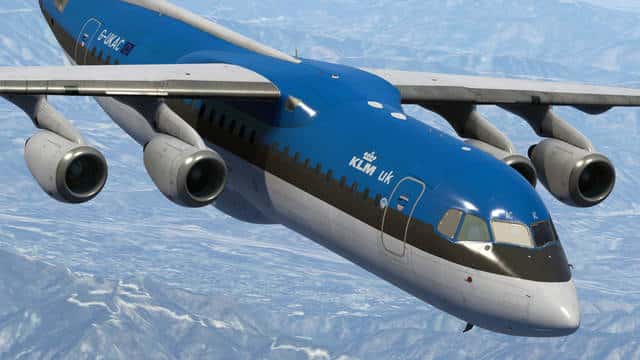

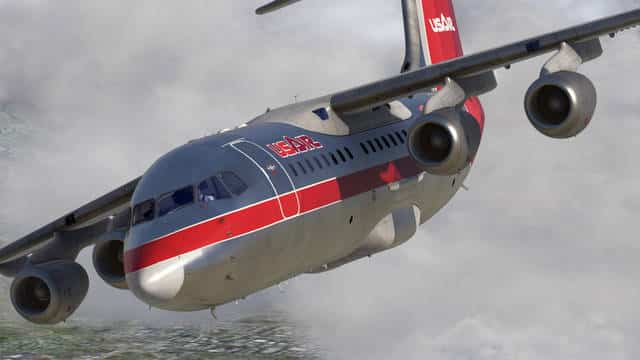
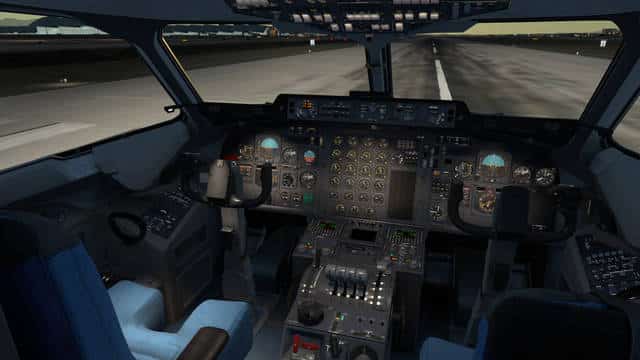
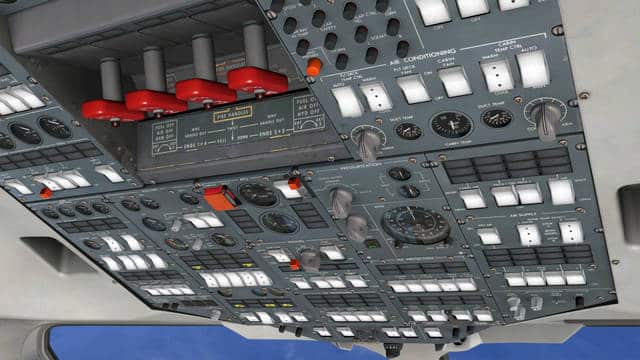
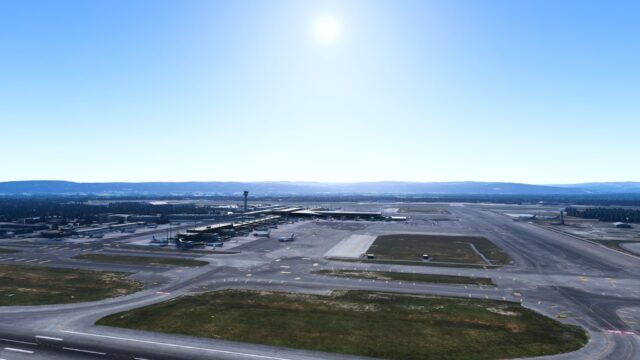

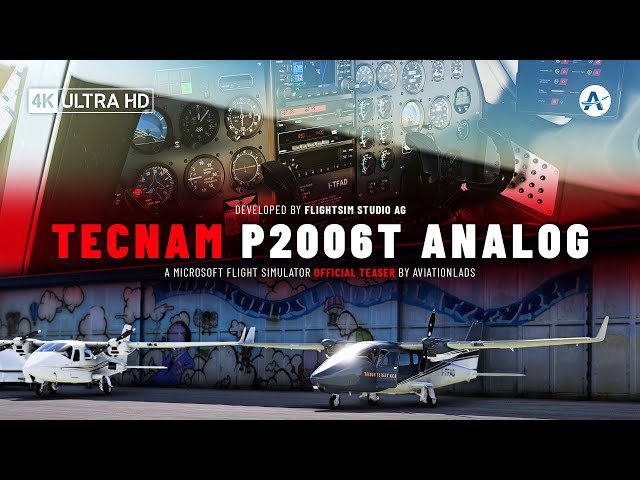
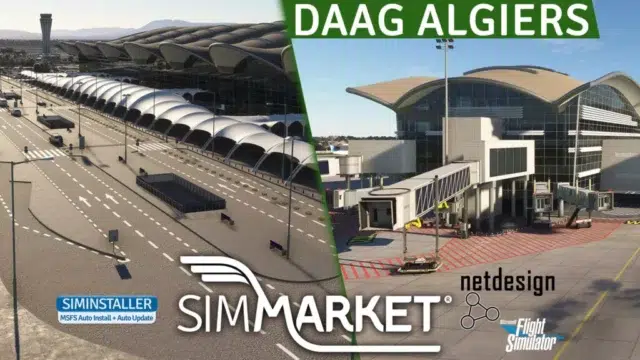
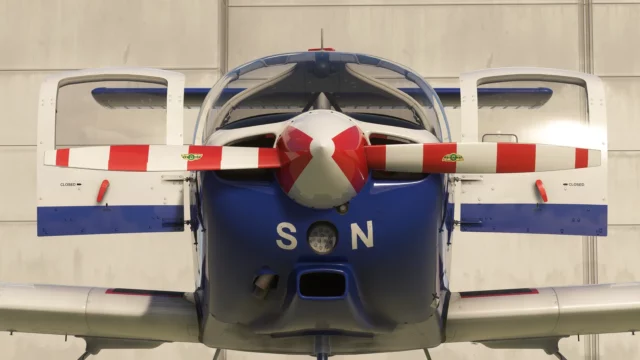
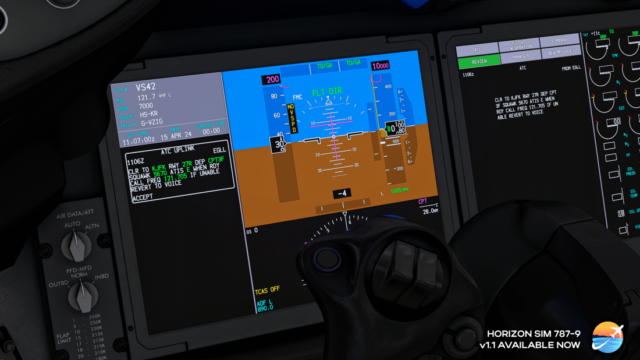

Sieht solide aus. Eine RJ-Version soll auch folgen. Leider schauen die Vorschaubilder zu der 747 nicht so gut aus, optisch wäre es wünschenswert, wenn die auch so gut daherkommen würde, wie die BAe, wenn auch bei der 747 ein Flieger mit ziemlicher Systemtiefe dabei herauskommen soll. Mal abwarten, wird wohl noch dauern und vielleicht verbessern die die Optik noch.
An sich sieht das nach einem tollen Addon aus, leider gibt es nur noch sehr wenige davon, die in der realen Welt rumfliegen, zumindest in Mitteleuropa
Das ist ja das schöne an einem Simulator – da kann man auch mal die Zeit zurückdrehen und die alten Strecken von PSA, Crossair oder Eurowings nachfliegen 🙂
Es gab vor einer gefühlten Ewigkeit schon mal eine Umsetzung der BAe146 unter dem Label von Justflight. Das Produkt durfte ich seinerzeit hier besprechen. Die Systemtiefe und alles andere waren damals schon ganz okay, aber die Flugdynamik leider unterirdisch. Die fast zeitgleich erschienene Version von Qualitywings war damals viel besser. Bin gespannt, wie es jetzt ist.
Die QW war gut damals, jetzt für 80€ sollte man da aber mehr erwarten.
Schönes Flugzeug, viele schöne Details. Z. B. die Nachtbeleuchtung ist sehr gelungen. Nur der Autopilot bzw. die Abstimmung Autopilot/Flugmodell lässt Fragen offen. Der IAS Modus pendelt hin und her, LNAV und LOC Intercept eiern herum (S-Kurven). Beim manuellen Fliegen fällt der überempfindliche Trim auf. Egal ob manuell oder AP, ich fand es sehr schwer die Kiste exakt zu fliegen.
Hab ihn mir auch gegönnt. Das Muster ist einfach toll für kleine Hüpfer. Erstes kurzes Fazit. Potential, aber noch eine lange Westrecke vor sich, bis sie meiner Meinung nach bracuhbar ist. SIeht hübsch aus, aber mein Flug war schon vor dem Take-Off zu Ende. Im FMC lässt sich kein RNAV-Departure auswählen (wird nicht einmal angezeiggt). Viele kleine Dinge, die noch nicht passen. Ob da wirklich ausführlich Beta-getestet wurde?!
Ich stelle ihn mal wieder in den Hangar und versuche es nach einem neuen Update weiter.
EDIT: laut Justflight forum ist das Flugzeug auch noch nicht Vatsim fähig. Das Radio koppelt sich im Moment scheinbar noch nicht mit dem Client, zB VPilot.
Betatest, hm. Das Ding levelt 100ft vor der eingestellten Altitude aus. Das ist schon ein krasser Bug. Mal abgesehen von den FMC Problemen, sowas fällt niemandem beim Betatest auf ??
Danke für diesen kurzen Report. Das bestätigt in Teilen meine Befürchtung. Sollte sich das Problem bestätigen, wäre der Hersteller massiv in der Pflicht. Aber ein anderer Gedanke zu RNAV: ist das originale Modell vielleicht einfach noch nicht dafür zugelassen gewesen?
Also RNAV-approaches werden angezeigt… Kann mir also nicht vorstellen, dass RNAV generell nicht möglich sein sollte.
Macht ja immer wenig Sinn, Addons verschiedener Hersteller zu vergleichen, aber die QW-146er können beides, SID und STARs in RNAV. Also würde ich es hier auch erwarten. Da heisst es wohl hoffen und warten… wie sind denn die manuelen Flugeigenschaften?
Mittlerweile hat es schon drei Updates, also die kümmern sich wirklich schnell um die Probleme. Steckt schon viel Liebe zum Detail in dem Projekt. Und so blöd wie das klingen mag, der kleine Jet wächst einem richtig ans Herz 😊.
Nett gesagt 🙂 Wahrscheinlich auch, weil er so gut wie weg ist aus der realen Fliegerei. Ja, je nach Team, was an deren Fliegern arbeitet, sind die Ergebnisse wohl ganz unterschiedlich. Ich hoffe, die nehmen sich eines Tages noch einer DC-10 an :-))